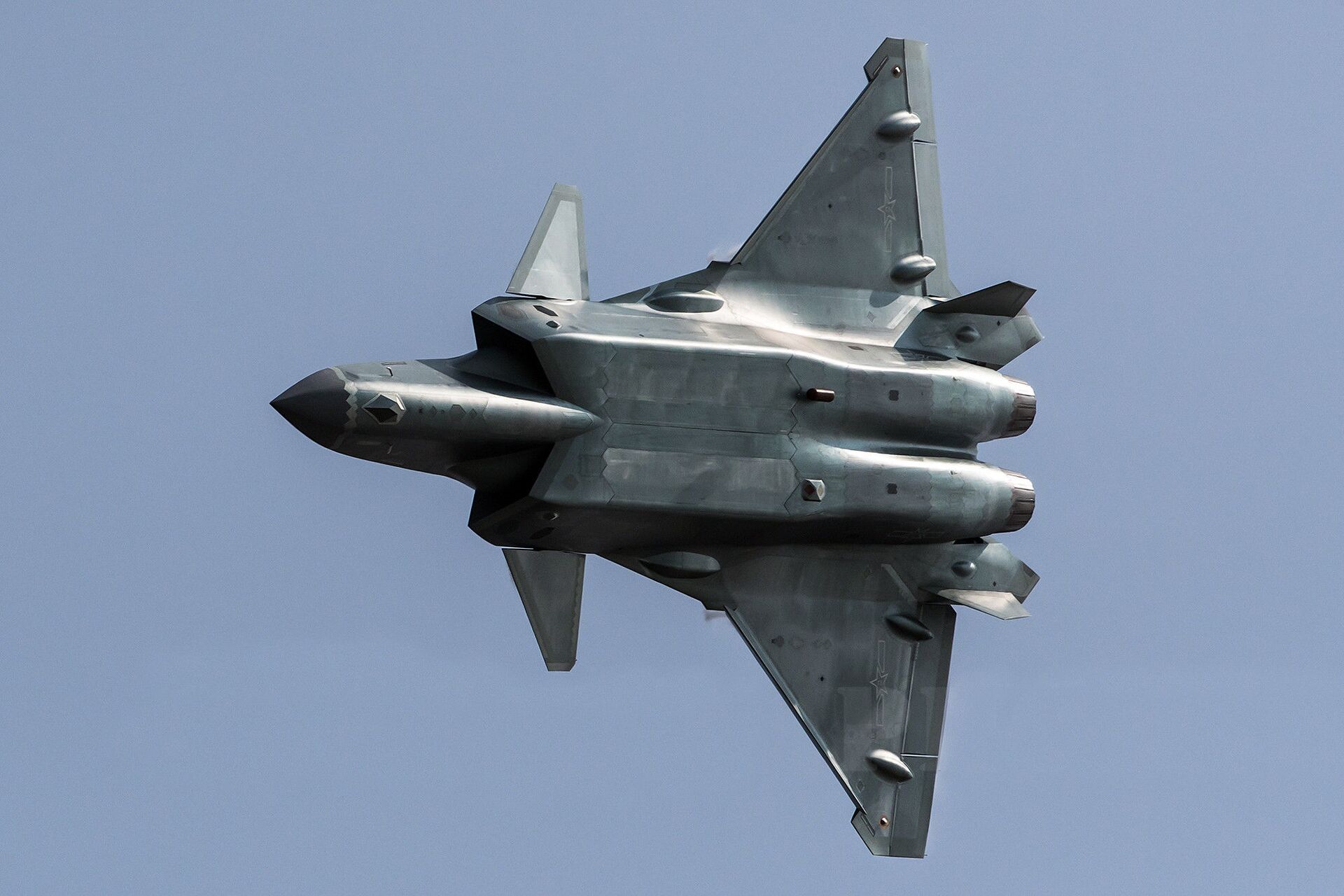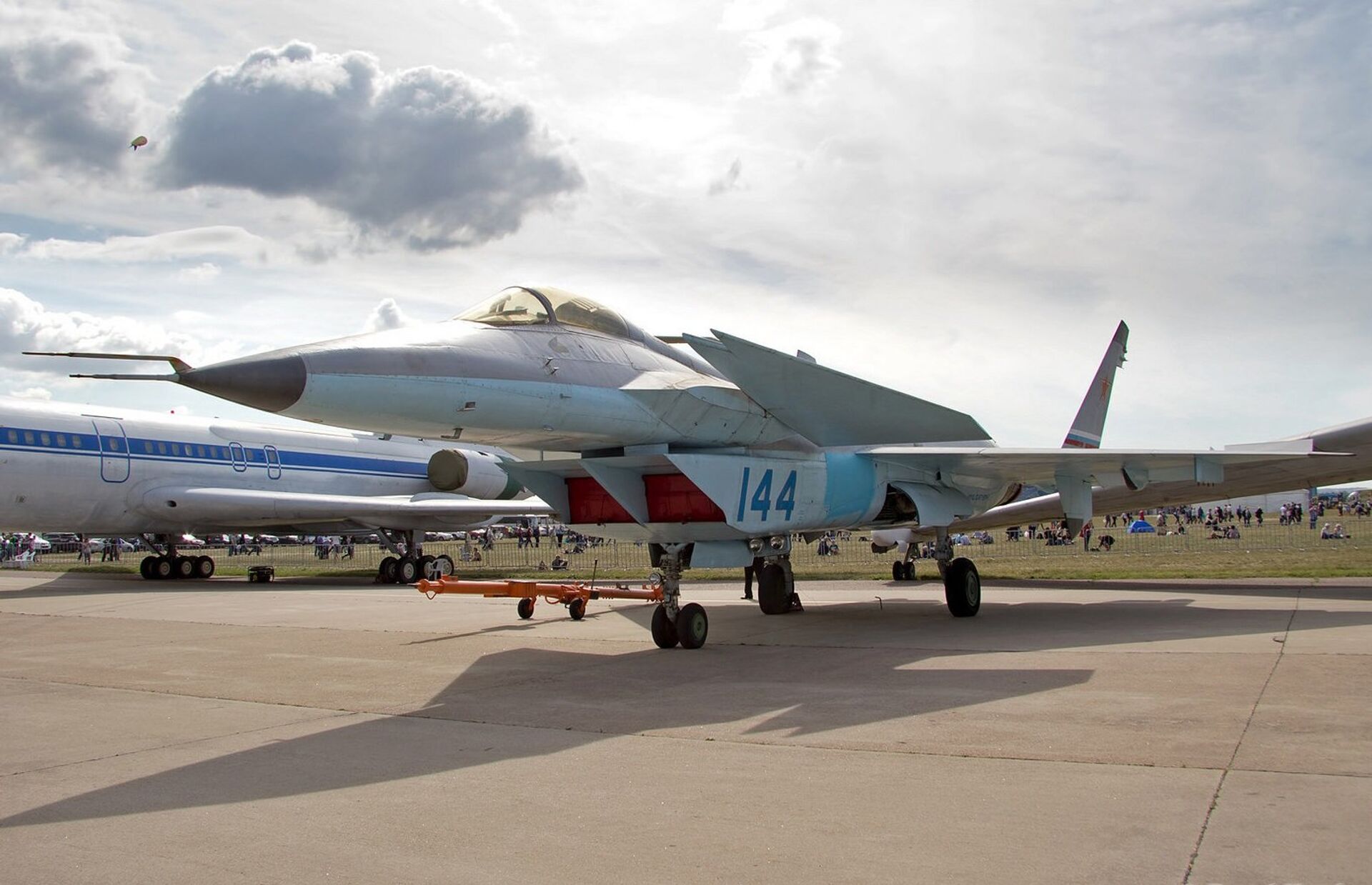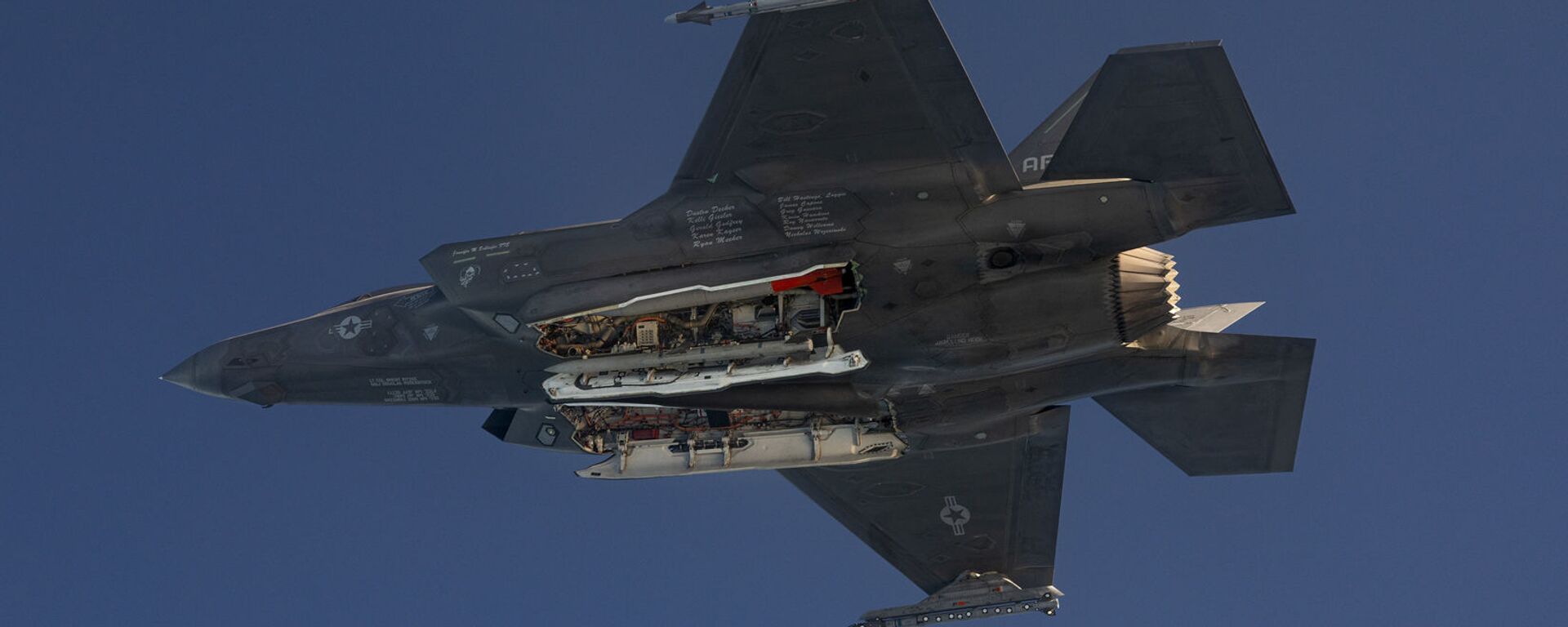China's 'Mighty Dragon': What We Know About J-20 Jet and Its Fearsome Missiles
15:52 GMT 15.11.2023 (Updated: 16:15 GMT 15.11.2023)
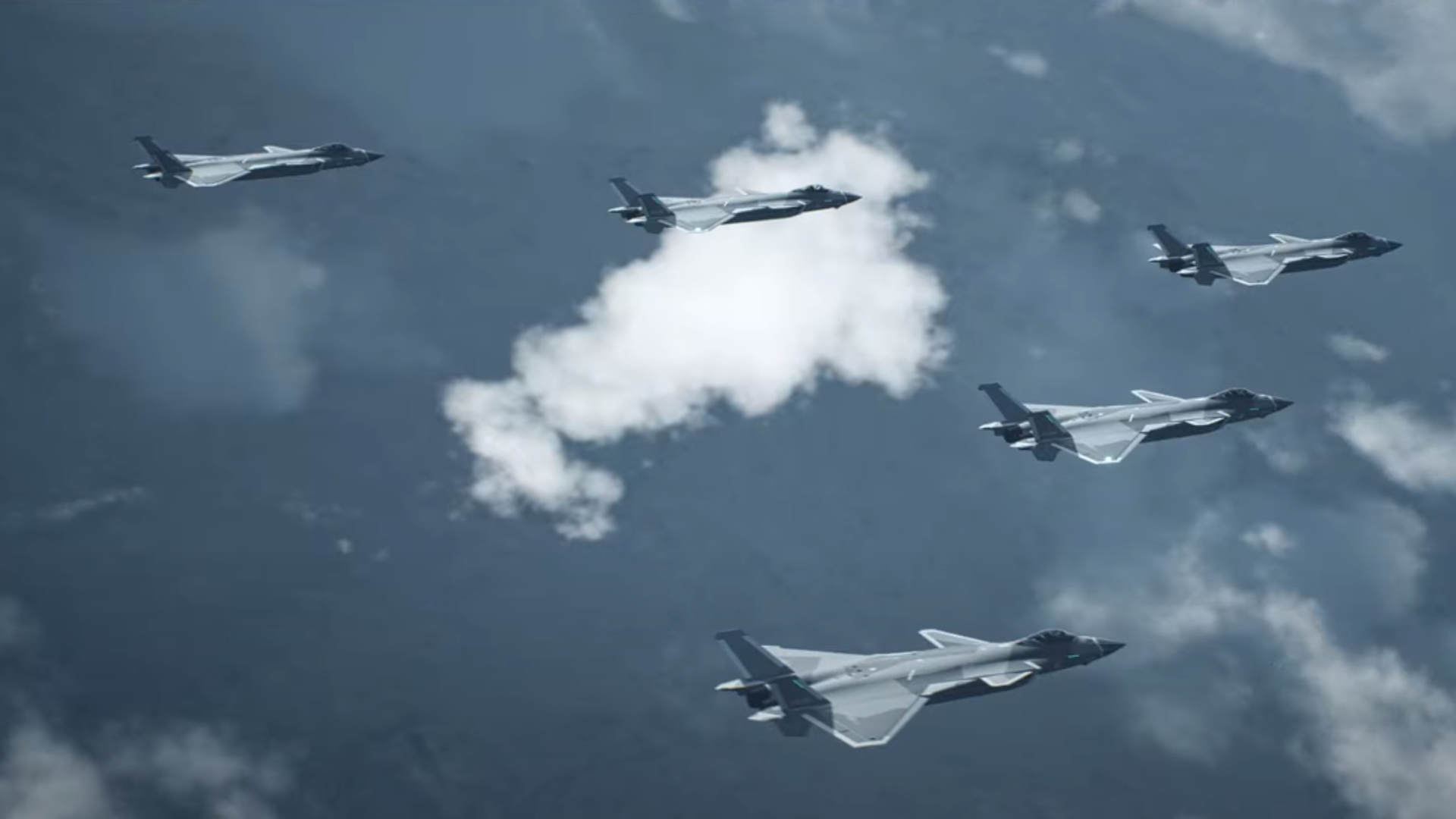
© Photo : YouTube / 赵羽佳
Subscribe
China’s Defense Ministry has released the first-ever footage of the Chengdu J-20 Mighty Dragon stealth fighter firing an air-to-air missile and demonstrating the fifth-generation warplane’s combat readiness. Here’s everything we know about this unique Chinese combat platform and its onboard complement of weapons.
A video released last Friday on the eve of the 74th anniversary of the founding of the People’s Liberation Army Air Force (PLAAF) showed off the J-20’s ability to engage in escort missions, conduct high-speed maneuvers, perform aerial refueling, and, for the first time ever on camera, fire off an air-to-air missile.
Open-source intelligence observers believe the footage saw the firing of either the PL-10 (lit. "Thunderbolt-10"), a short-range, infrared-homing air-to-air missile, or the PL-15 ("Thunderbolt-15"), a beyond-visual-range anti-aircraft missile with standoff capabilities. Read on for more information about both.

Screengrab of Chinese Defense Ministry video showing J-20 firing off an air-to-air missile.
© Photo : Chinese Defense Ministry
‘Mighty Dragon’ Takes Flight
Developed by the Chengdu Aerospace Corporation under the J-XX program through the 2010s and introduced into service in 2017, the J-20 marked China’s entry into the fifth-generation stealth fighter jet race, as the Asian power began to expand its military capabilities in response to Washington’s "Pivot to Asia" containment strategy.
The J-20’s airframe is unlike anything being built by other global aerospace giants today, with its distinctively long frame, large frontal winglets (canards) and wings pushed toward the rear of the plane distinguishing it from Lockheed Martin’s F-22 Raptor and F-35 Lightning II, Russia’s Sukhoi Su-57, and prospective fifth-gen aircraft like the Shenyang FC-31 Gyrfalcon, India’s HAL Advanced Medium Combat Aircraft, Turkiye’s prospective TAI KAAN fighter, Sweden’s Flygsystem 2020, and the Sukhoi Su-75 Checkmate, all of which feature more conventional airframe and wing designs.
Visually, the J-20’s appearance most closely matches the Mikoyan MiG 1.44, a prospective fifth-gen fighter developed by the USSR featuring a similar wings-toward-the-rear configuration, forward winglets, and underbelly weapons compartment. Designed in the 1980s and intended to be introduced into service with the Soviet Air Force in the 1990s, the prospective aircraft was never completed thanks to the USSR’s collapse in 1991.
Instead, the project hobbled along through the 1990s, and a technology demonstrator prototype was even built and test-flown twice in the year 2000. However, a lack of funds, and a 2002 decree concentrating limited budgetary resources on the Su-57 ultimately killed the MiG 1.44 (which, coincidentally, was originally slated to become the MiG-35 in series production; the name has since been given to MiG's 4++ gen jet).
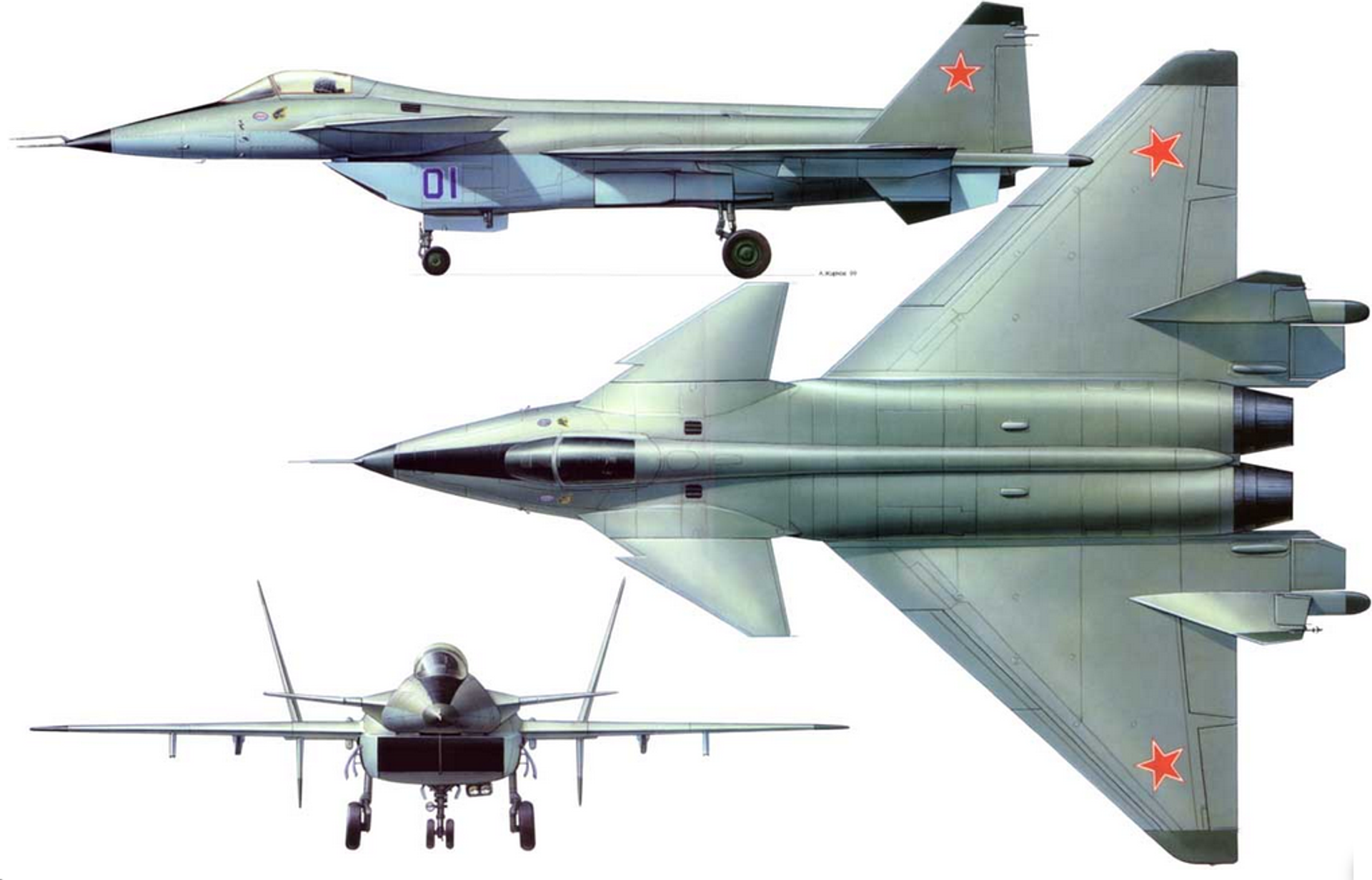
MiG-1.44. Artist's rendering.
© Photo : aviaru.rf
Together with superficial similarities in airframe and wing configuration, the two projects bear some resemblance in specifications and performance as well, although major differences are immediately evident.
The J-20A (the first production variant of the J-20 platform), is a single-seater, dual-engine jet with a length of 21.2 meters, a 13-meter wingspan, a height of 4.69 meters, an empty weight of 17,000 kilograms, a maximum takeoff weight of 37,000 kilograms, a 12,000 kilogram fuel capacity, and is powered by Shenyang WS-10C afterburning turbofan engines. Early production model variants of the aircraft were fitted with Russian-made NPO Saturn AL-31 series power plants. J-20s have the capacity to carry up to 11,000 kilograms of weaponry, with missiles and bombs stored in multiple internal weapons bays and on four under-wing pylons. The aircraft appears to have no autocannon, indicating that PLAAF strategists intend for the aircraft to be used for long-range engagements, not nose-to-nose dogfights. The J-20A has a reported top speed of 2,126 kilometers per hour, a 5,500-kilometer range, a 2,000-kilometer combat radius, and a 20,000-meter service ceiling. The jet has a reported radar cross section (RCS) of as little as 0.01 meters, complicating enemy efforts to pick it up on radar.
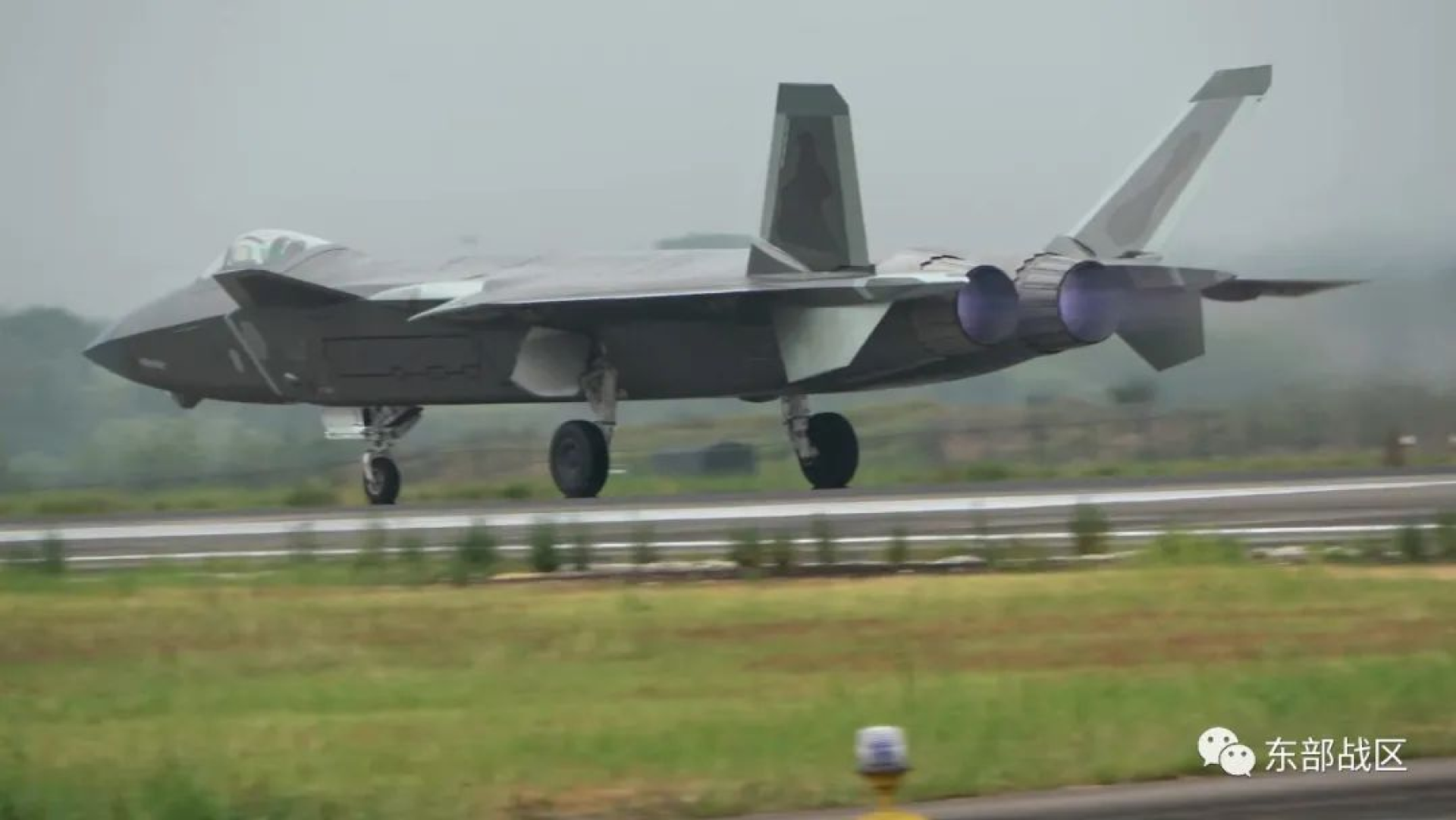
A J-20 stealth fighter of China's People's Liberation Army Air Force (PLAAF) takes part in drills near Taiwan on August 3, 2022.
By contrast, the final prototype version of the MiG 1.44 was a single-seater, dual-engine jet with a length of 19 meters, a 15-meter wingspan, a height of six meters, an empty weight of 15,000 kilograms, a maximum takeoff weight of 23,500 kilograms, and was powered by twin Saturn AL-41F afterburner-equipped turbojet engines with plasma ignition system, all-angle thrust vector control, and fully digital control systems – a larger, more powerful variant of the AL-31 series. The MiG 1.44 featured 12 internal and 8 external weapons hard points, a 30 millimeter GSh-30-1 cannon, and a combat load of only 1,600 kilograms in its prototype form. The jet was to have a top speed of up to 3,210 kilometers/hour, a 20,000-meter service ceiling, a 4,000-kilometer range and an RCS of less than 0.3 meters.
Weapons and Avionics
The J-20 can be fitted with a wide variety of Chinese-made air-to-air missiles, including the PL-10 (a 105 kilogram multi-element imaging infrared guided missile with a 20-kilometer range), the PL-12, a 180 kilogram active radar-guided medium range missile with a range of 70-100 kilometers, and the PL-14, a 200-230 kilogram beyond-visual-range active radar homing missile with an operational range of a whopping 300 kilometers. For ground engagements, the jet can be armed with the LS-6 50 and 100 kilogram small-diameter precision-guided bombs, and, reportedly, small anti-radiation cruise missiles like the YJ-91, a derivative of the Russian Kh-31P, or the YJ-91A anti-ship variant.
As far as avionics go, J-20s are fitted with the Type 1475 active electronically scanned array radar, an EOTS-86 electro-optical targeting system, and an EORD-31 infrared search and track system. Other features include a fully-digital glass cockpit and holographic heads-up display, and helmet-mounted display system.
The jet’s stealth features include embedded antennas, radar-absorbent coating materials, the aforementioned internal weapons bays, and composite materials in the airframe and wings.
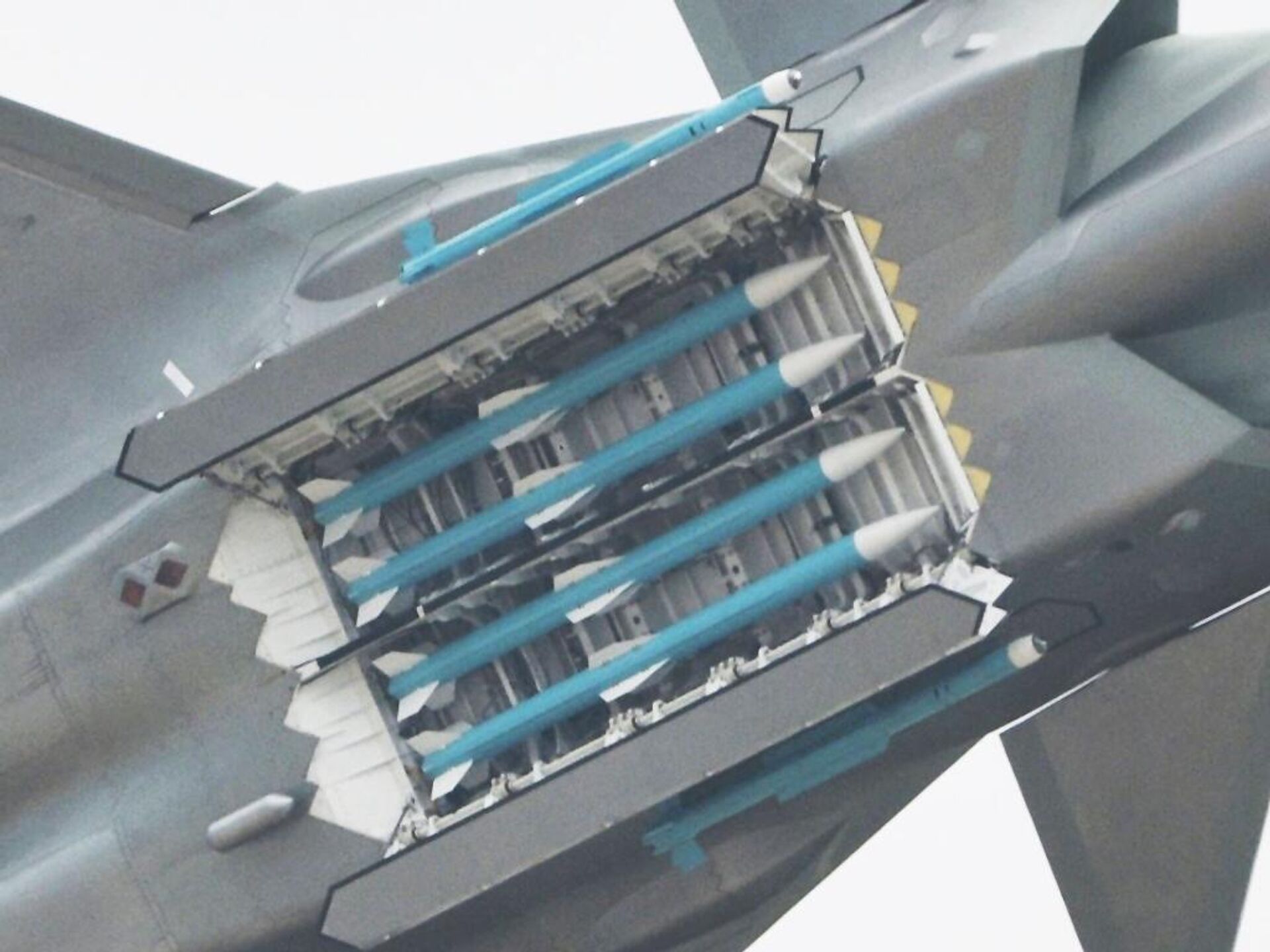
Chengdu J-20's internal weapons bay configuration.
© Photo : Chinese social media
Strategic Implications
The strategic implications of the Mighty Dragons’ addition to the PLAAF are considerable. Western observers estimate that China has taken delivery of between 200 and 250 J-20s in the first half of 2023, with more expected through the second half of the year.
With their 2,000 km flight radius, J-20s have enough range to cover almost the entirety of the contested air and sea space in the South and East China Seas operating from bases on the Chinese mainland. Combined with their ability to refuel midair using Y-20 tankers, and taking advantage of artificial island landing strips constructed throughout the South China Sea, the jets’ effective range is extended even further. Add to this the standoff range anti-aircraft missiles J-20s carry in their bellies, and you’ve got yourself a powerful argument for securing areas targeted by foreign powers.
J-20s also have a major advantage over their prospective fifth-gen adversary, the F-35. Lockheed’s jet is equipped with only a single Pratt & Whitney F135 engine, which means that if the engine is damaged or malfunctions midflight, the aircraft is virtually guaranteed to be lost – a significant danger for warplanes operating in maritime areas far from aircraft carriers or airports.
By contrast, the J-20’s twin-engine design means that even if one of the engines is knocked out or damaged in fighting or malfunctions in flight, the aircraft will likely be able to limp back to base using its remaining power plant.
US Pacific Air Forces Command confirmed last year that China had begun deploying J-20s for long-range flights to intercept and escort US aircraft, including the F-35, in the Asia-Pacific theater.
These deployments, combined with a stream of reports on continued upgrades to the J-20s’ capabilities and characteristics, demonstrate the PLAAF’s commitment to the future of the aircraft, and show that the planes don’t seem to suffer from the same teething issues plaguing the F-35 series, which continues to suffer from over 800 defects, over eight years after it first began to be delivered to the US military in 2015.

